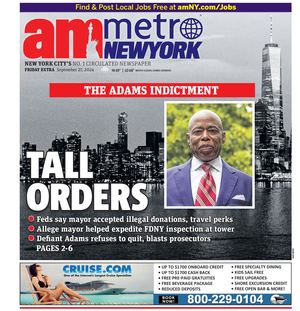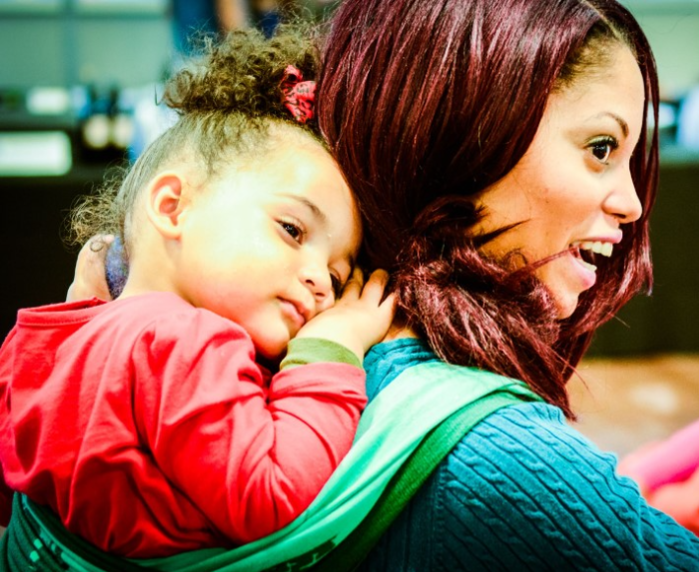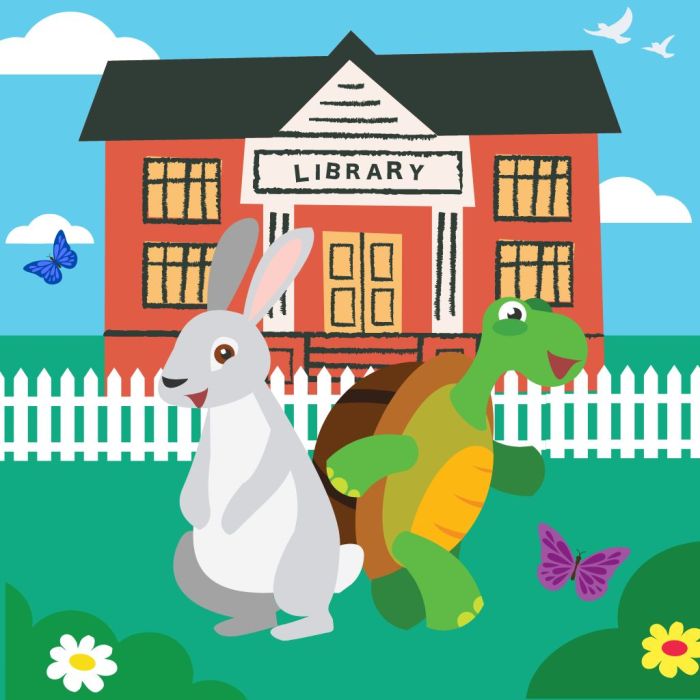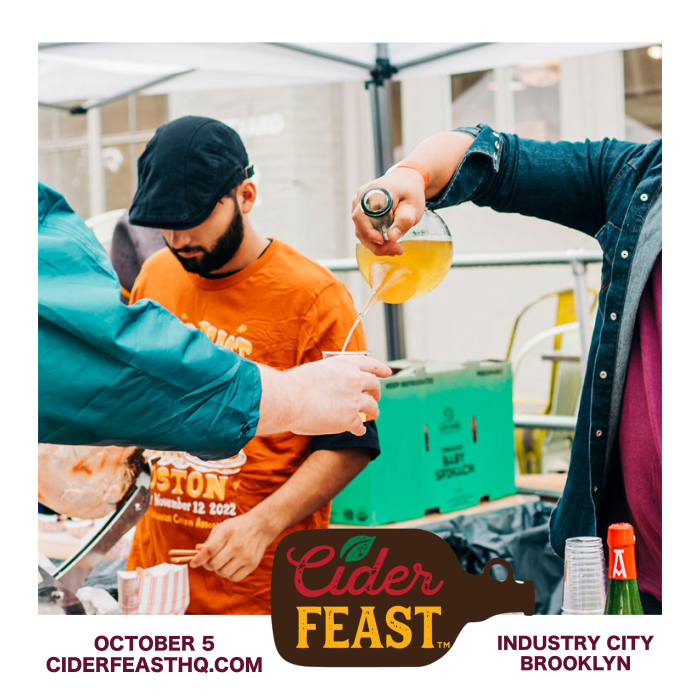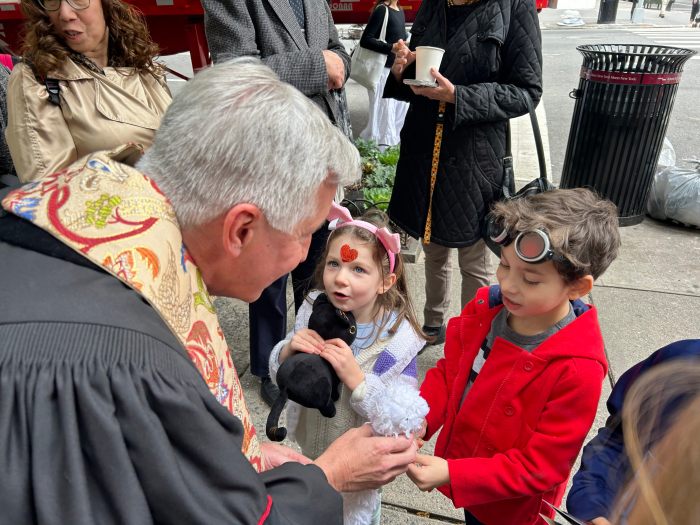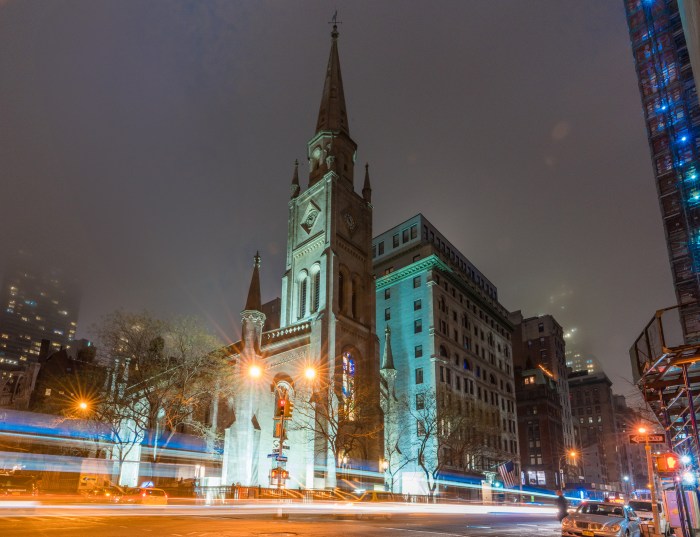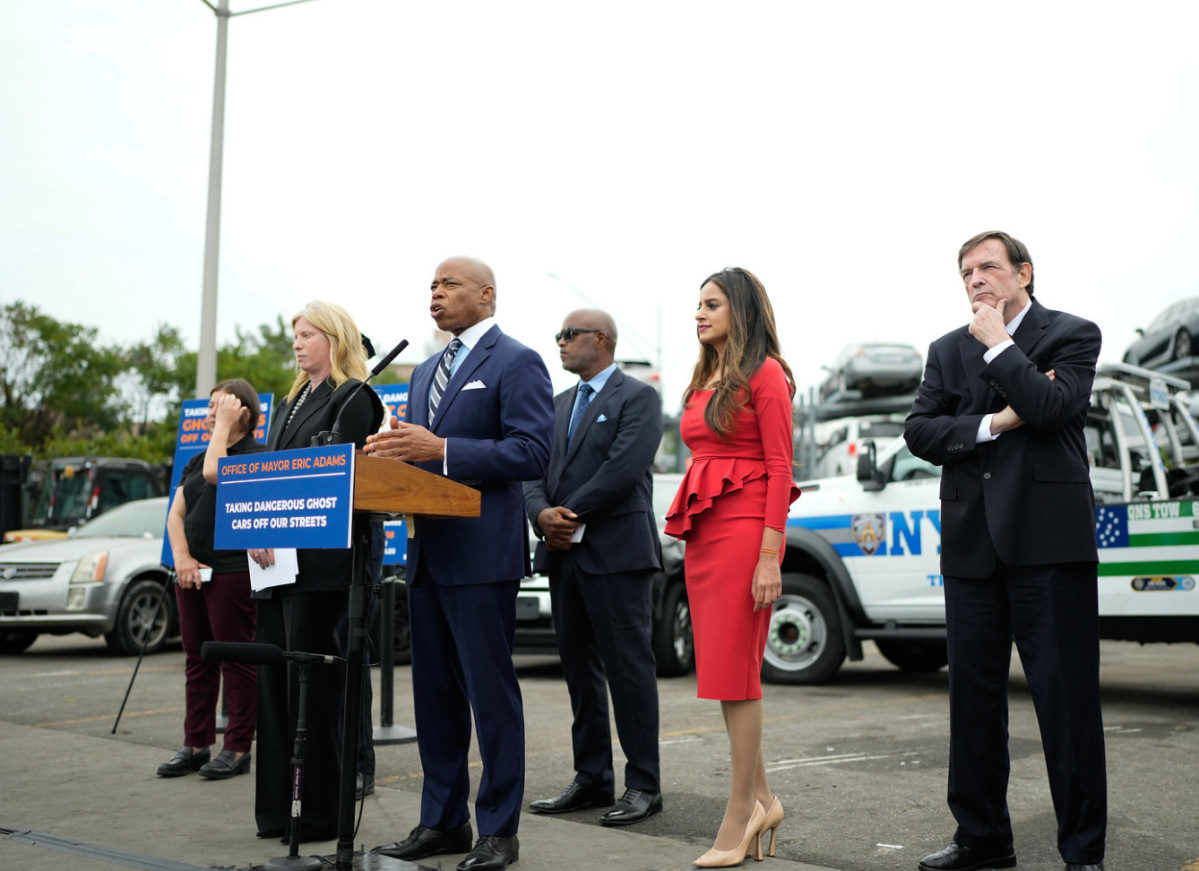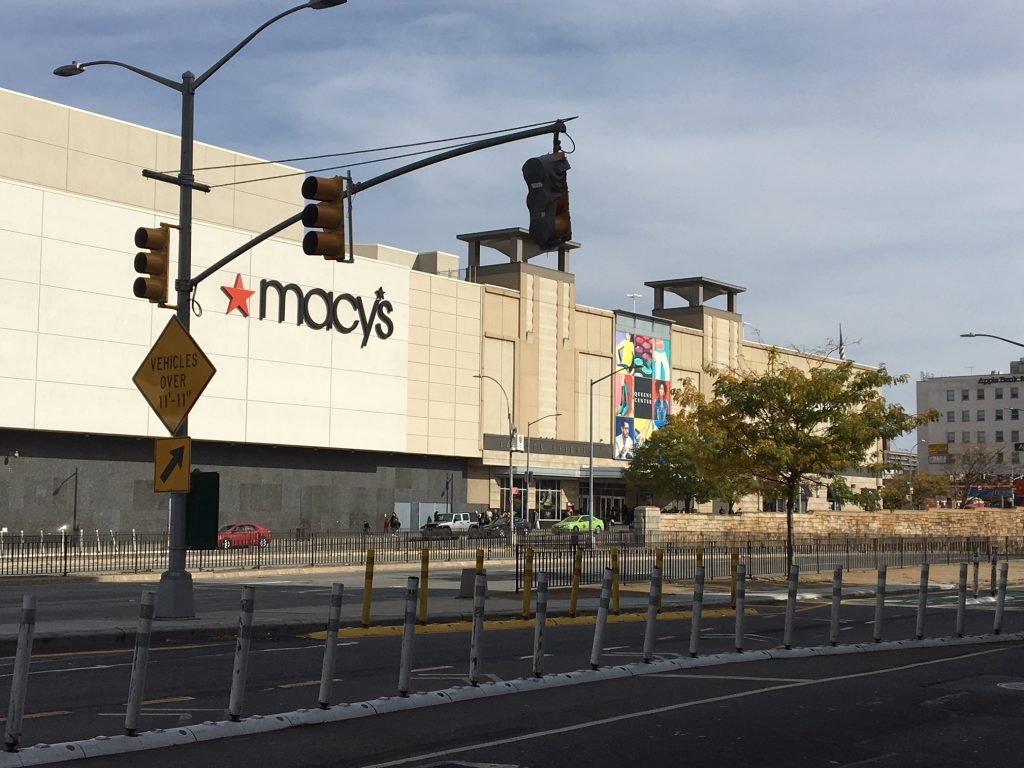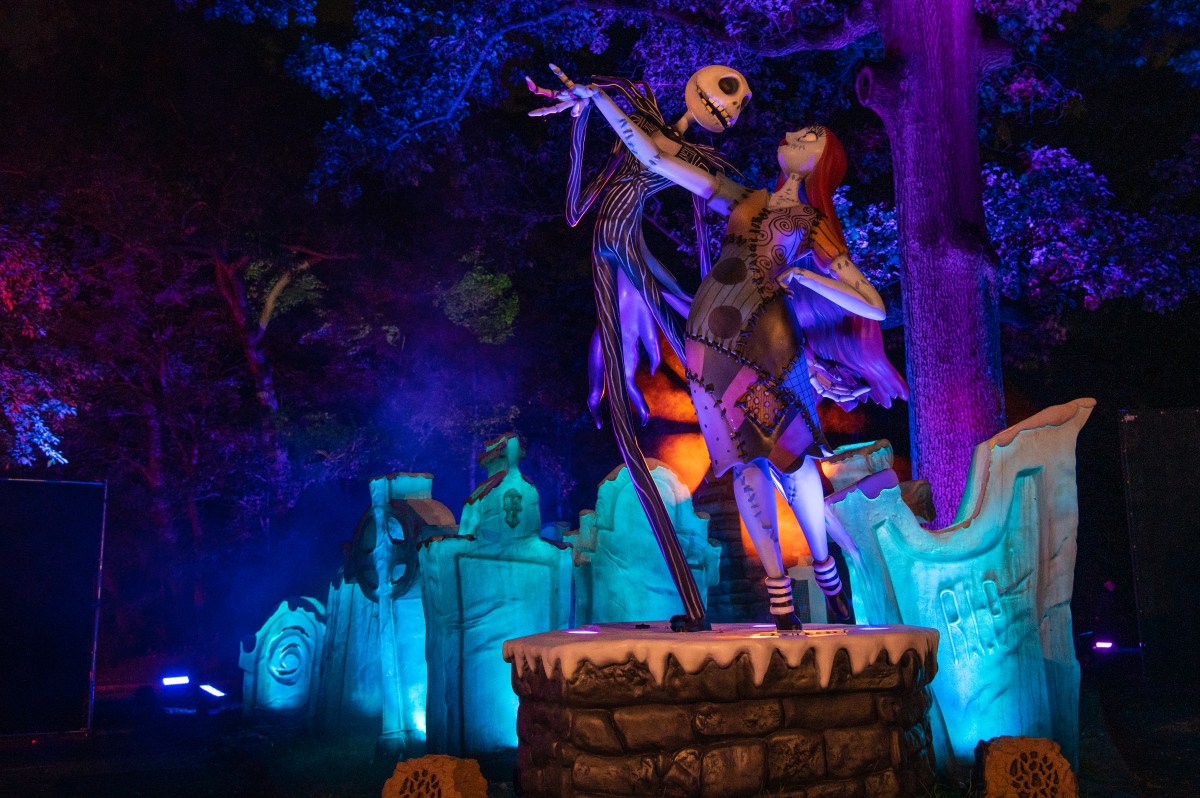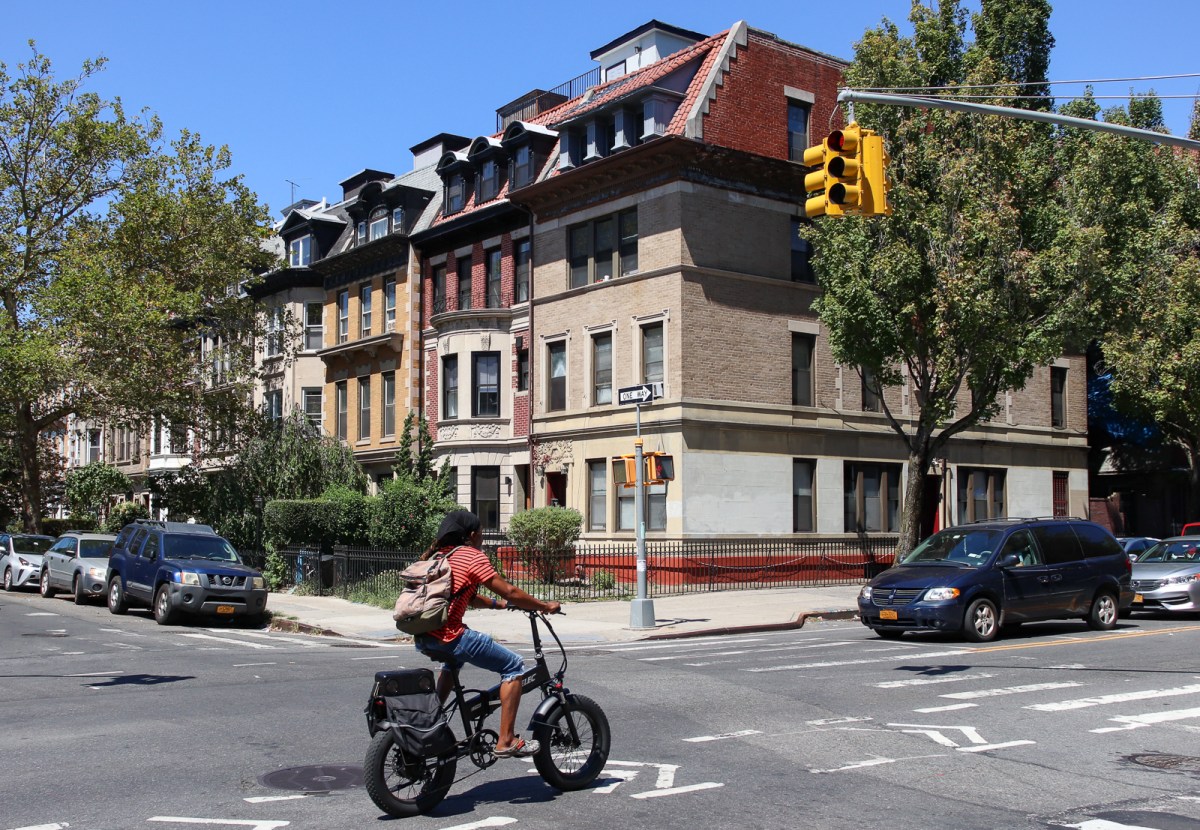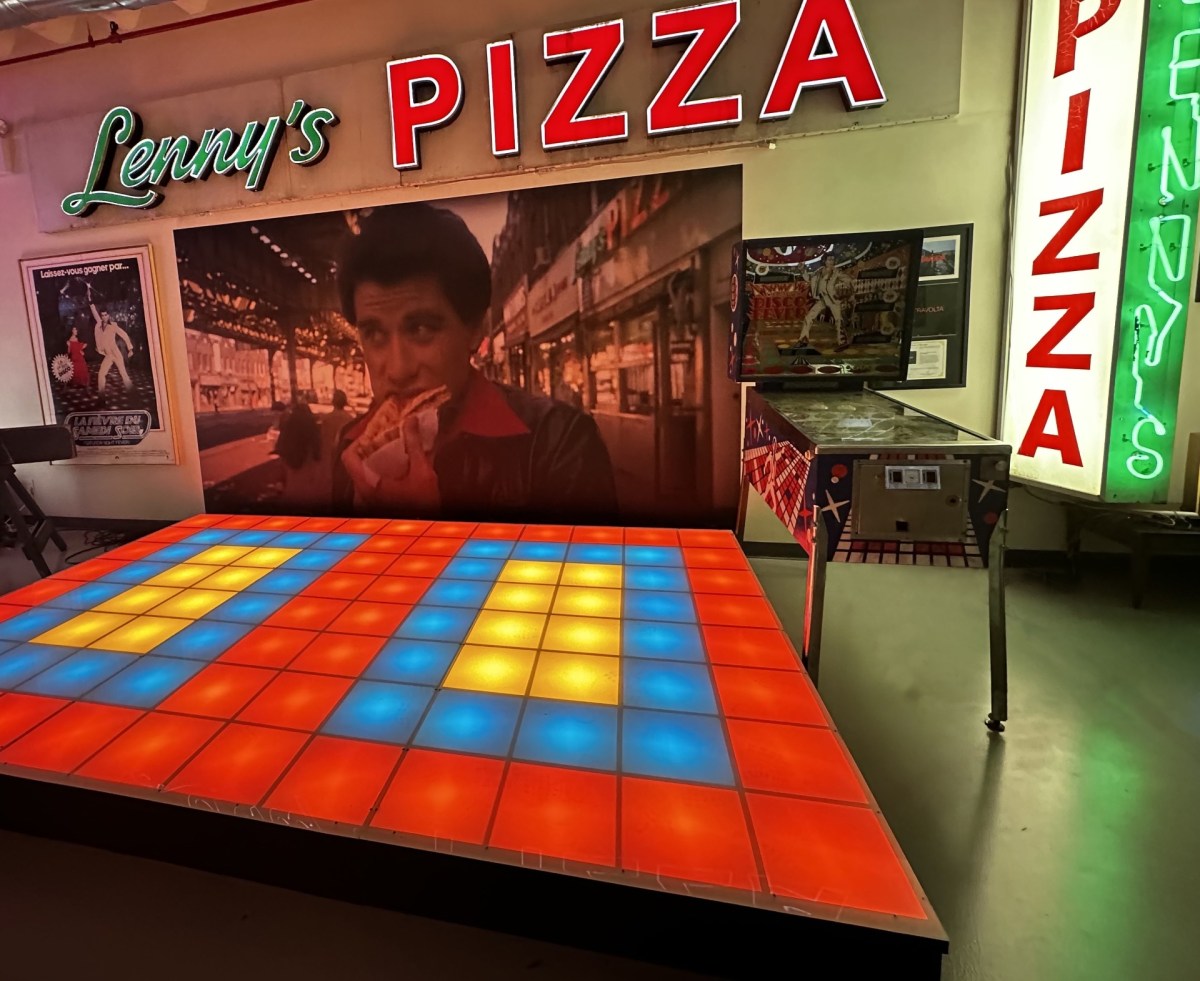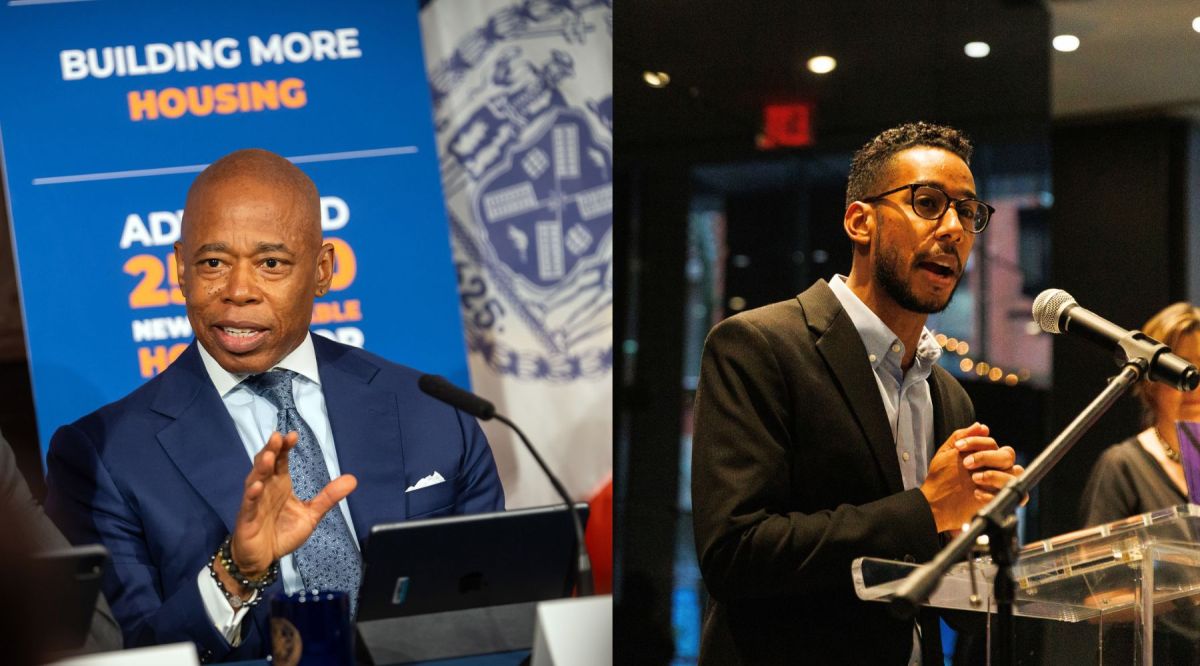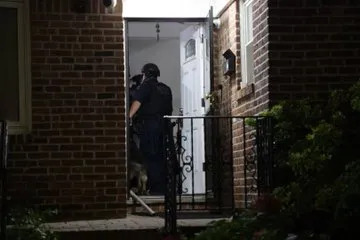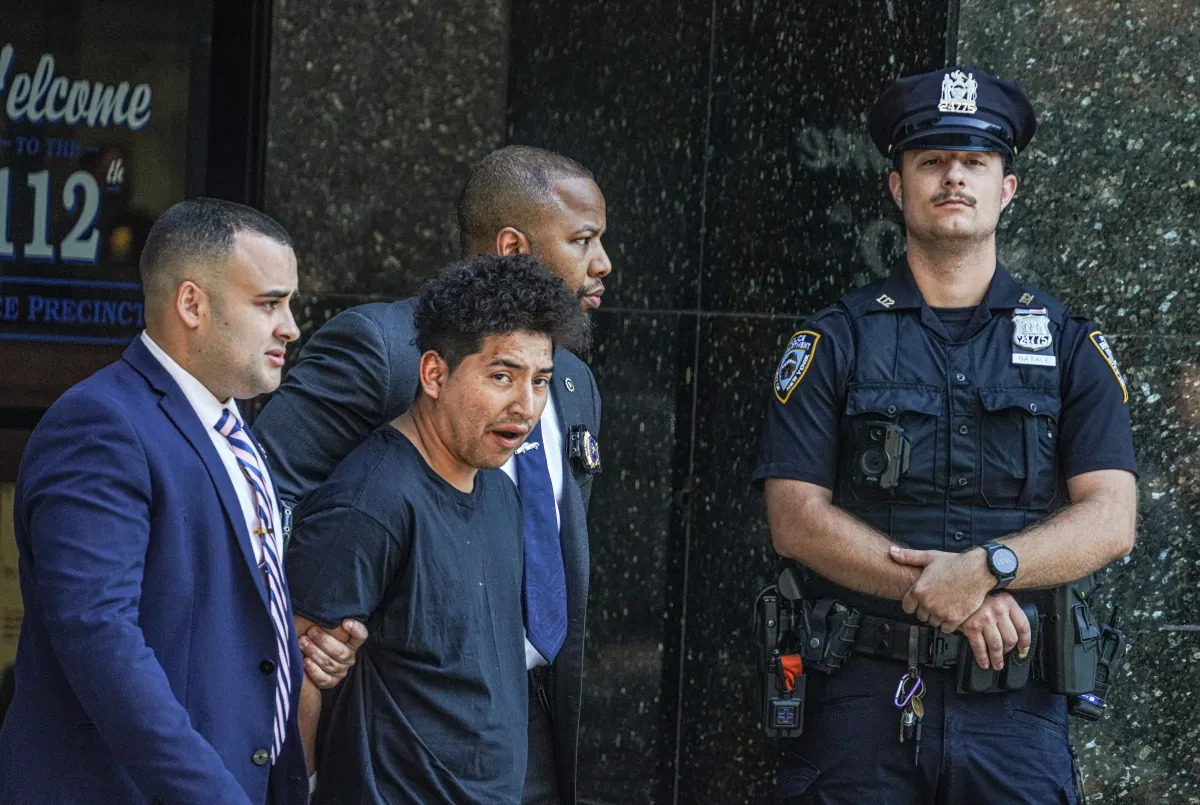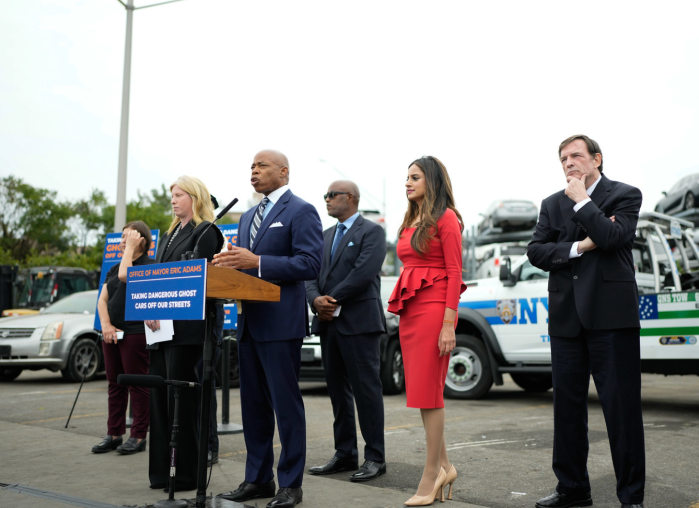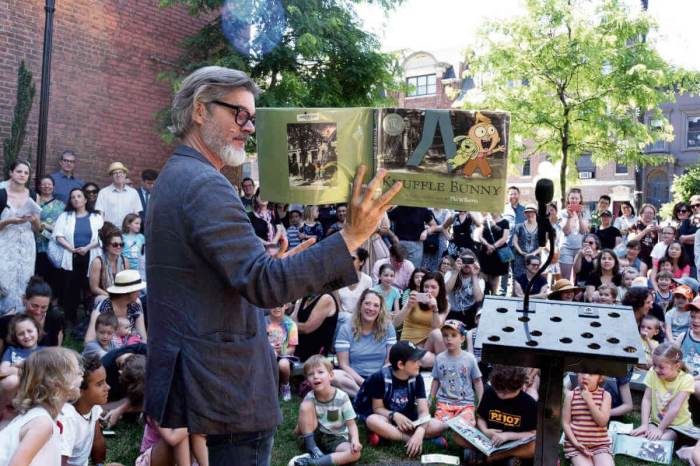BY STEPHANIE BUHMANN
Surreal concepts encourage imagination, contemplation
WONDERMARE
Through August 8
At Apexart
291 Church Street
(212) 431-5270 or www.apexart.org
In “Wondermare,” Susan McIntosh and Albert Wilking present a world as un-settling as it is dizzyingly colorful. Costumes and animal-inspired masks are mixed in with a selection of films made in collaboration with various artists. There is no checklist for the eclectic works on display, leaving the impression that this exhibition was conceived as a “Gesamtkunstwerk” (according to the curators’ belief that ours is “a world out of balance” if not a “house of cards on the brink of a catastrophe.”).
While “Wondermare’s” aesthetic is somewhat neo-pop punk, its context is based on Lewis Caroll’s classic “Alice in Wonderland.” Many of the fantastical costumes and flickering images on multiple screens were inspired by one of Alice’s most famous remarks: “I almost wish I hadn’t gone down that rabbit-hole—and yet— and yet—it’s rather curious, you know, this sort of life! I do wonder what can have happened to me!”
“Wondermare” is exactly that place — located on the other end of the rabbit hole; a place that is surreal, at times nightmarish, and which tastes of the insane. The press release informs us that it is meant to reflect the adult world and the various rites that lead to obtaining “a civilized persona.” As an interactive exhibition, “Wondermare” aims to provide an opportunity for the audience to re-consider their own passage to adulthood.
We are asked in which of the “Alice in Wonderland” characters we can detect our childhood selves. Were you “Alice, a naïve child/woman who wraps herself in consumer goods,” the curators wonder, “or maybe you are the Mad Hatter, the bad boy enabler who gloriously advocates addictive destruction…?”
We are encouraged to have our individual answers filmed in front of a green screen. A different background and context will later be added to the footage, enabling us to become the stars of our own film narrative.
Though the exhibition feels disjunctive and its ambitions could be more clearly articulated, it is important to note that “Wondermare” is a work in progress — a conceptual organism that will only discover its true potential through the audience’s
willingness to participate.
Black Acid Co-op (Justin Lowe and Jonah Freeman)
Through August 15
At Deitch Projects
18 Wooster Street
(212) 343-7300 or www.deitch.com
This is the third collaborative project from New York-based artists Justin Lowe and Jonah Freeman. As was the case in last year’s “Hello Meth Lab In The Sun” (with Alexandre Singh) — their critically acclaimed installation at Ballroom Marfa in Texas — the structure of “Black Acid Co-op” is based on an eclectic assemblage of rooms.
At Deitch, the installation’s expanse is no less impressive than in Marfa, encompassing the gallery’s main space and basement. It is inspired by the illegal drug featured in the exhibition title, which as the urban dictionary informs us is “not an acid/pcp combo, but a type of very, very dirty LSD crystal.”
With this at its core, “Black Acid Co-Op” translates as an underground, labyrinthine infrastructure which the viewers can enter and navigate as they please. Each room is a microcosm of sorts and devoted to another sub-culture involved with the production, trade or consumption of the drug. Through this diversification, Lowe and Freeman comment on the close ties and interlocking realities between the counter-culture and industrial society.
Here, questions of community, ritual, and modern psychosis are compressed and offered as one packaged experience. Upon entering this world dense in information, everyone will be able to find something to relate to, be awed and appalled by.
One room contains a Chinatown bazaar in which familiar details are mixed in with surreal undertones. T-Shirts with pornographic imagery are on view and the “store’s” counter glass cases are filled with plants, crystals and roots of varying size. From here, a flight of stairs leads up to a homebrew drug lab where sloppy containers and cigarette butts characterize a rather psychotic atmosphere. There’s a bathroom, smelly carpet, nooks, crannies and a hovering sense of anxiety. A cracked wall leads into a pristine museum style gallery — or is it someone’s luxurious salon? Different artworks line the walls, and a few ragged sculptures (which are shown in traditional display cases) are particularly interesting. The floor is covered with a bright red carpet, a stark contrast to the white walls, evoking an anticipation or gore which reminds one of filmmaker David Lynch’s use of imagery to communicate ominious foretelling.
Each turn offers another story to invade, another scenario to soak up. There is a dark room in which a single overhead light reveals walls scarred by black peeling paint; another that might have housed a commune, a university library, and even a pirate radio station.
While transitioning from room to room and from one reality to another, “Black Acid Co-Op” unfolds like a strange narrative. The different rooms become film sequences or chapters in a bizarre book. Viewers find themselves immersed in an infectious journey which has the characteristics of a strange dream or drug trip. As it reveals itself layer-by-layer, “Black Acid Co-Op” leaves us pondering if we are mere onlookers or actual protagonists.
JÚLIUS KOLLER & JI’Í KOVANDA
Through August 16
At Ludlow 38
38 Ludlow Street
(between Grand and Hester
(212) 228-6848 or www.ludlow38.org
The oeuvres of Slovakian artist Július Koller (1939-2007) and Czech artist Ji’í Kovanda (B. 1953) have much in common. Both conceptually investigate questions of existentialism and problems of modern communication.
Despite the fact that they were born a generation apart, Koller, as well as Kovanda, lived for years under a regime that did not allow true artistic freedom. Since the 1960s, when living in Bratislava, Koller had been devoted to the development of conceptual tools that would maintain a sense of independence in Communist Czechoslovakia. Especially the “Prague Spring” in 1968 — a brief period of political liberalization in Czechoslovakia that ended when the Soviet Union and members of its Warsaw Pact allies invaded the country to halt the reforms. This inspired Koller to contemplate the utopian potential of free thought. His work is a personal, witty and at times ironic response to a system, in which culture was defined by an institutional art devoted to Socialist Realist ideals outlined by Moscow.
While Koller’s output has been vast, it was not until fairly recently that his actions, objects, texts and an extensive referential archive have gained more attention. Through the curatorial effort of Tobi Maier, Ludlow 38 offers an important introduction to Koller’s concept of the world. Text cards and works on paper are exhibited, many of which reveal Koller’s interest in signs, such as the question mark, or wordplay. “Escape of a Geo-graphical Object 2 (U.F.O.),” 1986, is one of many works focusing on U.F.O.s, which to Koller could also stand for Univerzálna Futurologická Organizácia (Universal Futurological Organization), Univerzálny Filozoficky Ornament (Universal Philosophical Ornament) or Underground Fantastic Organization.
Whereas much of Koller’s oeuvre consists of simple notes, diagrams, and conceptual paintings, Ji’í Kovanda’s métier is performance art. He stages actions (inspired by daily routines) as well as the role of the individual in the public domain. They take place in both public and private spaces — and often do not even involve an audience. In an elegant installation of primarily black and white photographs, we are able to study excerpts from Kovanda’s body of work. Bearing titles such as “carry some water from the river in my cupped hands and release it a few meters downriver…,” these images reveal the beautiful simplicity of the inherent gestures. Though Kovanda does not regard his work as political, it does amount to a unique comment on socially accepted routines and the so-called order of things. His work is Romantic, poetic, and truly inspirational.
The columns held us up
Through August 1
At Artists Space
38 Greene Street, 3rd Floor
(212) 226-3970 or www.artistsspace.org
This complex, collaborative project brings together a group of artists working in different media—and marks a unique collaboration between two institutions: New York’s Artists Space and the Platform Garanti Contemporary Art Center, Istanbul.
As one of the first alternative exhibition spaces in the city (founded in 1972), Artists Space has long been devoted to the support of artistic experimentation and dialog in contemporary culture. For July, it has invited Platform (whose own space is currently closed for renovation) to take over its SOHO space and organize an exhibition as well as a series of events.
Curated by Vasif Kortun and November Paynter, “The columns held us up” pays homage to both institutions’ fundamental approach to collaboration and diversity of artistic expression. In addition to being an exhibition venue, Platform also provides artist residencies. The exhibited works are primarily by New York based and international artists, who have participated in the program in Istanbul.
Many of the works focus on complex everyday systems. A multimedia installation by collaborators Can Altay and Jeremiah Day, for example, explores how these systems can be spun into narratives. By documenting the production of stuffed mussels (a well-known street delicacy in Istanbul), Atlay and Day succeed in revealing an unusual facet of a local industry, but they while painting a portrait of the city at large.
Another fascinating work is by Bulgarian-born, New York-based artist Daniel Bozhkov. By hosting a site for storytellers which traces the journey of a family jewel engraved with an Ottoman Persian poem, Bozhkov creates an unusual document of the object’s meanings gathered along the way.
Other works in the exhibition include videos “Telematch Suburb” by Wael Shawky, a series of photographs by Corey McCorkle, a slide installation by Christodoulos Panayiotou, and an installation entitled “Kara-kum” by the late Hüseyin Alptekin.
Concurrent with the exhibition, Artists Space will accept book donations for Platform Garanti’s library through July.
